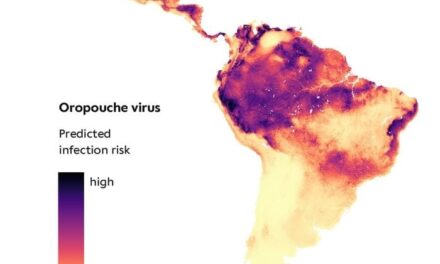A new study out of the Johns Hopkins Medicine Lyme Disease Research Center has revealed disparities in the diagnosis and treatment of Lyme disease between Black and White patients with the condition. Researchers say the data, which draws on participants’ medical histories, whether from Johns Hopkins Medicine or other institutions, highlights issues in the nation’s medical education on Lyme disease.
In the full article, published in JAMA Network Open, researchers say that Black patients were more likely to have advanced stages of Lyme disease when clinically diagnosed and also experience a longer time before receiving antibiotic treatment for the condition.
Further reading: Lyme Disease: Is a Better Diagnostic Test Around the Corner?
Lyme disease is a common tick-borne infection estimated to be on the rise in the United States, with nearly 500,000 new cases diagnosed and treated annually. The condition is a multi-system inflammatory illness caused by the bacteria, borrelia burgdorferi. In the earliest stage of Lyme disease, a rash can appear and is often accompanied by fever, joint pain, extreme fatigue and other flu-like symptoms. The rash, known as erythema migrans, may have varying appearances or not be present at all, contributing to difficulties in diagnosing the disease.
Early identification and antibiotic interventions are crucial to help prevent the infection from progressing to later stages and causing more severe symptoms, such as memory issues, irregular heartbeat, arthritis, and severe fatigue.
“Other studies have shown differences between White and Black patients with Lyme disease, using health insurance claims or Medicare data,” says author John Aucott, MD, director of the Johns Hopkins Medicine Lyme Disease Research Center and the Barbara Townsend Cromwell Professor in Lyme Disease and Tick-Borne Illness at the Johns Hopkins University School of Medicine. “Our clinic has meticulous in-depth information on patients’ Lyme disease stages and characteristics of their diagnosis, so we knew we could use this data to see if there was evidence of differences in the clinic between Black and White patients’ experience with Lyme disease.”
The cross-sectional study featured data from 1,395 patients with Lyme disease, all of whom were either clinic patients or research participants between 2008 and 2022 at the Johns Hopkins Medicine Lyme Disease Research Center. Researchers looked at participants’ medical records (both from Johns Hopkins Medicine or other institutions they were diagnosed at) to gather information on the nature of their Lyme disease diagnoses, including where, when, how and what stage of Lyme disease they experienced around the time of diagnosis.
Statistical tests showed a number of differences between Black and white Lyme disease patients. Over half (52.1%) of white patients presented only with a rash, compared to only 18.6% of Black patients.
The research team, led by Alison Rebman, MPH, calculated that Black patients had almost five times the odds of appearing in the clinic with advanced Lyme disease and had two times the odds of presenting without a rash or other telltale symptoms compared to White patients. The team also determined Black patients had a five-fold higher chance of waiting to receive antibiotic treatment for Lyme disease – 35 days compared to the White patient groups’ 7 days.
Aucott believes that these findings show a lack of physician and community awareness, as well as gaps in medical education on identifying Lyme disease in Black and other patients with darker skin. He explains this issue persists globally, especially as case of Lyme disease rise and infected deer ticks spread to new areas.
“One aspect of the substantially poorer diagnosis of Lyme disease in patients with darker skin is due to differences in the appearance of the skin rash, examples of which aren’t often seen in medical textbooks and education,” says Aucott. “We need to include examples and diagnosis specifications for Lyme disease rashes in Black patients in our teaching material to work on eliminating these differences.”
Aucott and the Johns Hopkins Medicine Lyme Disease Research Center have further plans to investigate these health inequities in future studies using artificial intelligence.
Aucott discloses a patent on Deep Learning for Lyme Disease Diagnosis using images of erythema migrans. All other authors have no potential conflicts of interest to disclose.
Other authors of this study include Samuel Starke of Johns Hopkins University School of Medicine Department of Medicine; and Alison Rebman, John Miller, and Ting Yang of the Lyme Disease Research Center and Division of Rheumatology at Johns Hopkins University School of Medicine.
This work was supported in part by the Steven and Alexandra Cohen Foundation, by the Jerome L. Green Foundation, and by a Rheumatology Research Foundation Career Development Funding Award.
Featured image: An example of how the rash commonly associated with Lyme disease, erythema migrans, presents in different individuals. Photo: John Aucott, M.D., Johns Hopkins Medicine





